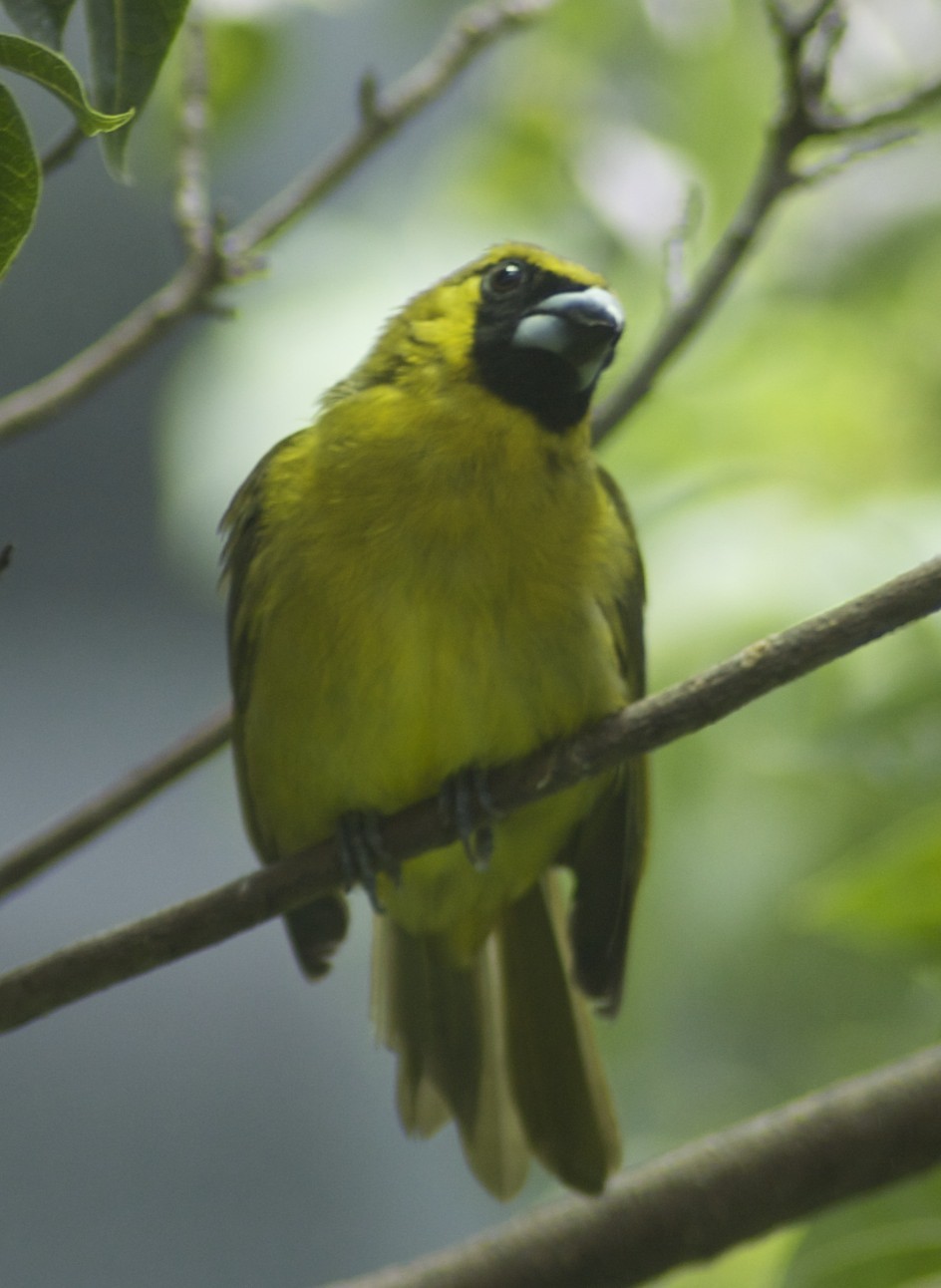Black-faced Grosbeak
A species of Black-faced and Yellow-green Grosbeaks Scientific name : Caryothraustes poliogaster Genus : Black-faced and Yellow-green Grosbeaks
Black-faced Grosbeak, A species of Black-faced and Yellow-green Grosbeaks
Botanical name: Caryothraustes poliogaster
Genus: Black-faced and Yellow-green Grosbeaks
Content
Description General Info
Description
The black-faced grosbeak (Caryothraustes poliogaster) is a large seed-eating bird in the cardinal family (Cardinalidae), which is a resident breeding species from south-eastern Mexico to eastern Panama. The adult black-faced grosbeak is 16.5 cm long, weighs 36 g, and has a heavy, mainly black, bill. It has a black face, yellow head, neck and breast, and olive back, wings and tail. The rump and belly are grey. Immatures are duller and have duskier face markings. The vocalisations include sharp chip or tweet calls, buzzes and whistles, and the song is a musical whistled cher chi weet, cher chir weet, cher chi chuweet. The black-faced grosbeak forages in shrubs or trees for beetles, caterpillars and other insects, and also eats fruit such as those of gumbo-limbo (Bursera simaruba), seeds, and nectar taken from flowers or epiphyte bracts. It forms noisy flocks of up to 20 birds, and is often in mixed-species feeding flocks with honeycreepers and other tanagers as well as New World warblers. It generally tries to avoid human-altered habitat though it can be sometimes found in heavily degraded former subtropical or tropical forests. This species breeds in the Caribbean lowlands and foothills from sea level to about 1000 m altitude, and is found in the canopy and middle levels of dense wet forests, tall second growth, and semi-open habitats such as woodland edge and clearings. The nest is a bowl constructed from bromeliad leaves and other epiphytes 3–6 m high in a small tree or palm. The female lays three brown-spotted grey-white eggs between April and June. 
Size
19 cm
Nest Placement
Tree
Feeding Habits
Black-faced Grosbeak has an omnivorous diet, mainly consuming fruits, insects, grubs, and caterpillars. Its foraging often involves sifting through foliage to locate food, showcasing a preference for varied sources. Unique adaptations include a strong bill to crack open hard seeds or fruit skins.
Habitat
The black-faced Grosbeak thrives within the canopy and middle story of humid evergreen forests, including forest edges and nearby secondary forests. These birds are adaptable and are also found in submontane broadleaf and pine forests. While primarily associated with primary forests, research indicates a notable presence in secondary forests and occasional sightings in pastures or along living fence lines with fruiting trees. Geographically, black-faced Grosbeak inhabit regions stretching from sea level up to altitudes of approximately 1200 meters, with rare observations at higher elevations in montane areas.
Dite type
Granivorous
General Info
Feeding Habits
Bird food type
Species Status
Not globally threatened.
